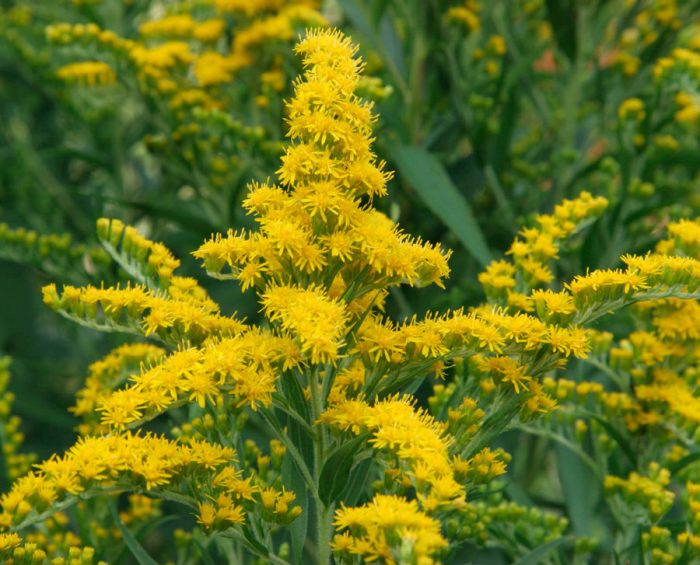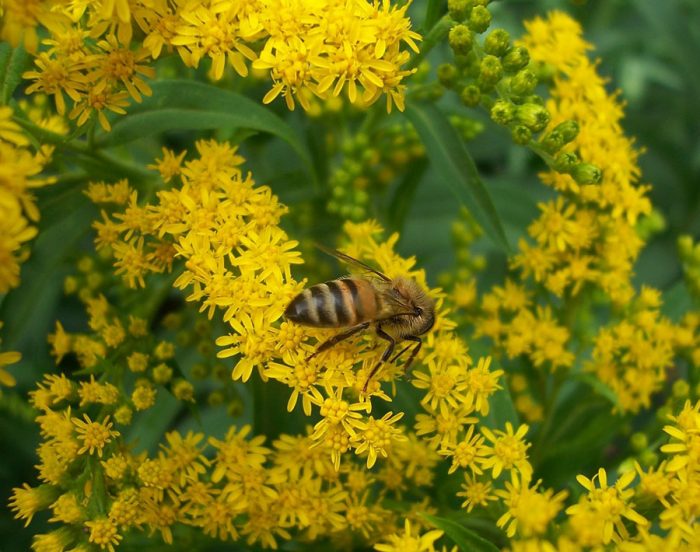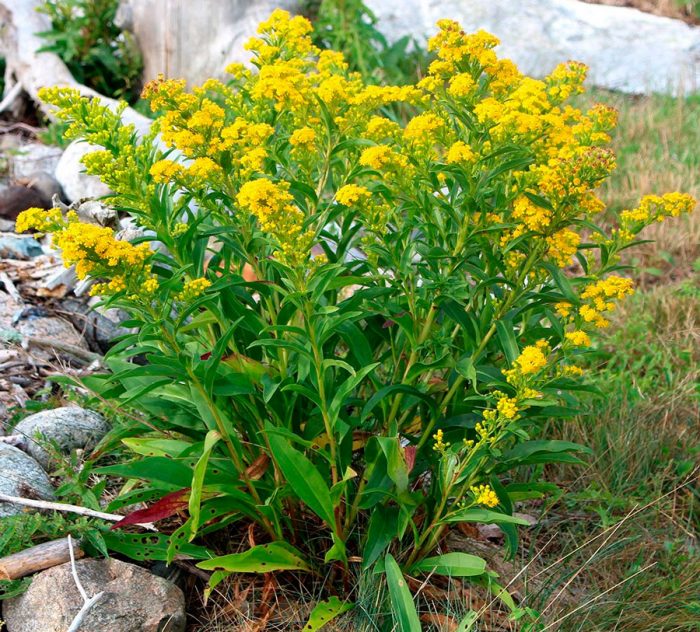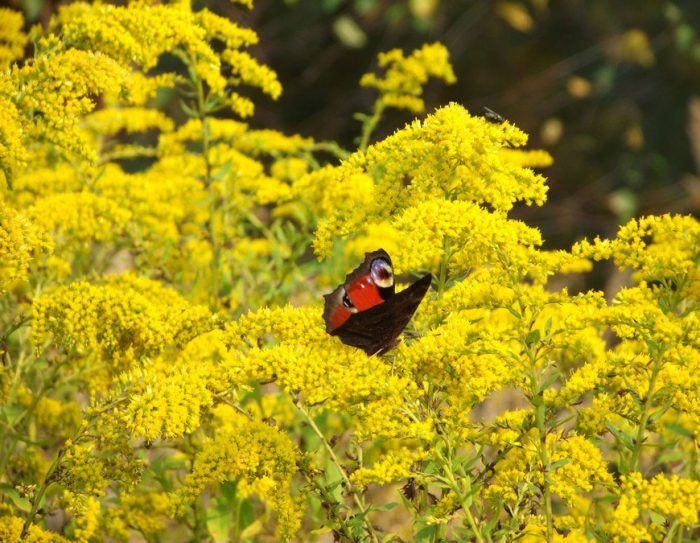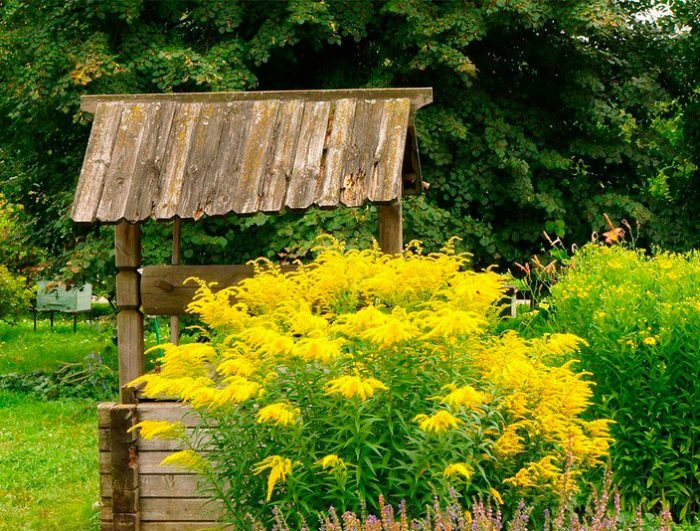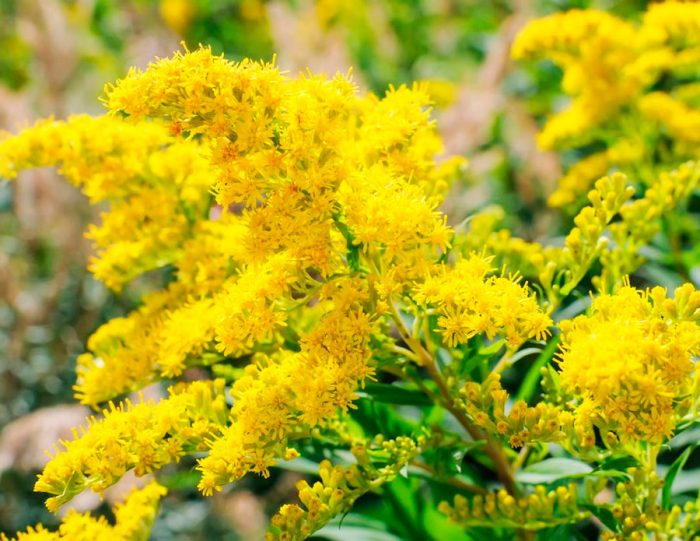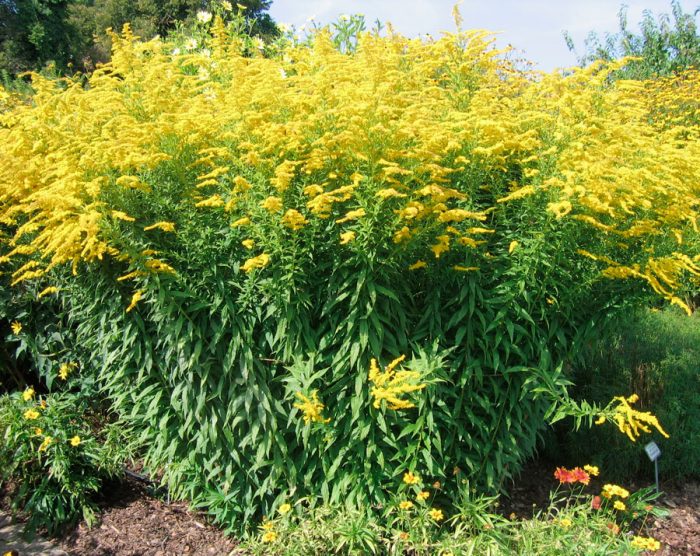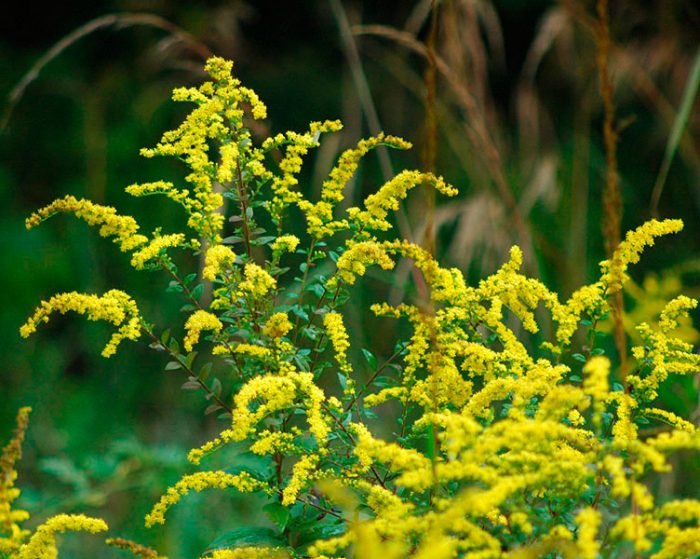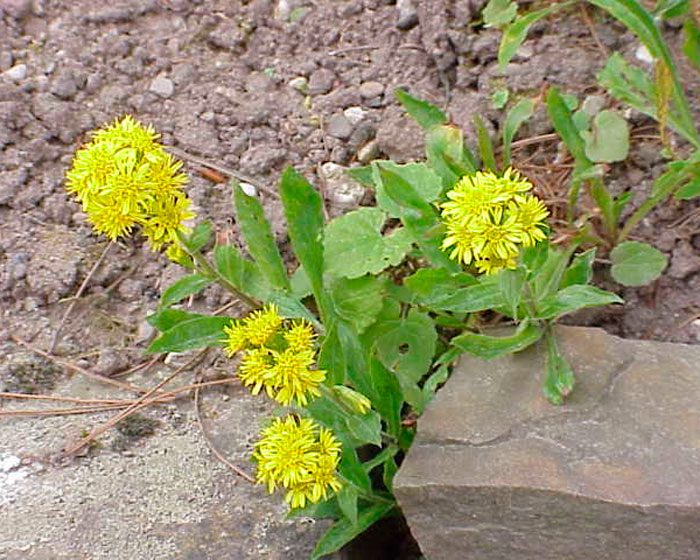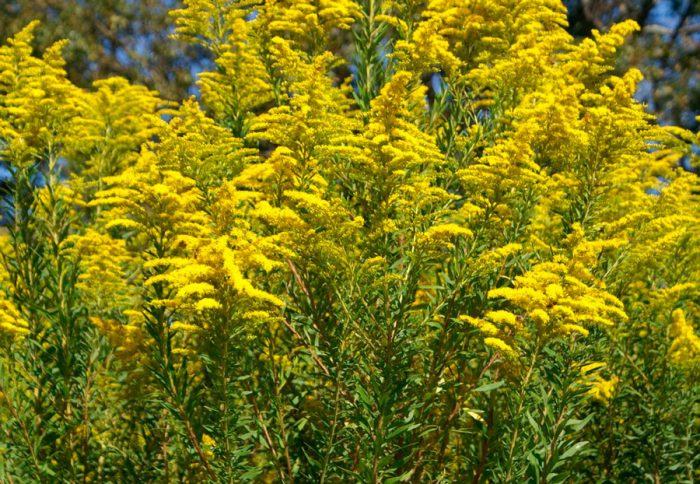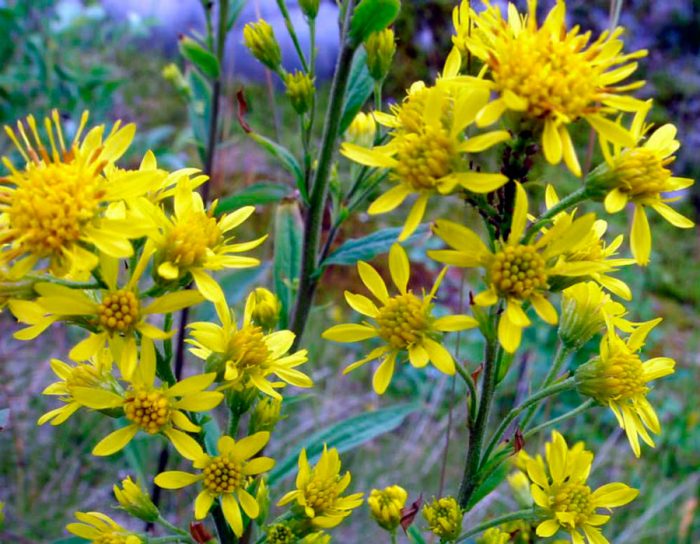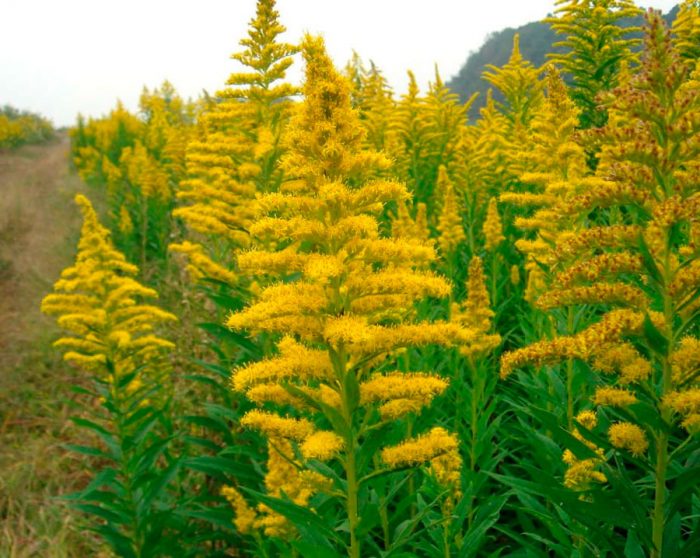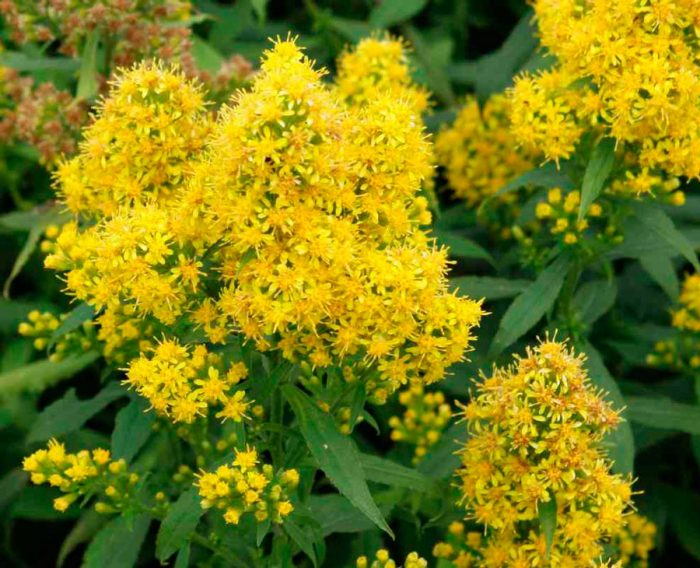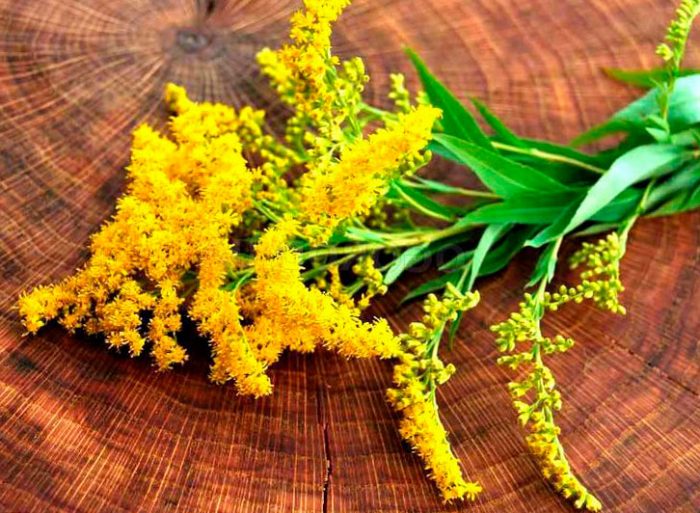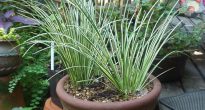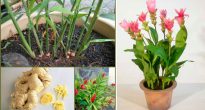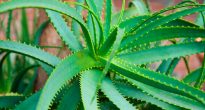The herbaceous perennial plant goldenrod (Solidago) is a member of the Asteraceae family. According to data taken from various sources, this genus unites 80–120 species. However, only 20 species of goldenrod are cultivated, for example, in the Caucasus, in the European part of Russia and in Western Siberia, the common goldenrod species is widespread, and in the Far East and in Eastern Siberia, the daurian goldenrod. The Latin name of such a plant in translation means "healthy" or "strong", while the name of the species common goldenrod semantically corresponds to the Russian phrase "golden rod". Such a culture is considered an excellent honey plant, and it is also used as a dyeing, healing and tanning plant. The Canadian goldenrod species is very popular, it was thanks to it that most garden decorative forms were born.
Content
- 1 Features of goldenrod
- 2 Planting goldenrod in the ground
- 3 Care of goldenrod in the garden
- 4 Types and varieties of goldenrod with photos and names
- 4.1 Goldenrod Shorti (Solidago shortii)
- 4.2 Goldenrod rugosa (Solidago rugosa)
- 4.3 Goldenrod daurian (Solidago dahurica = Solidago virgaurea var.dahurica)
- 4.4 Canadian goldenrod (Solidago canadensis = Solidago canadensis var.canadensis)
- 4.5 Common goldenrod (Solidago virgaurea)
- 4.6 Goldenrod highest (Solidago altissima = Solidago canadensis var. Scabra)
- 4.7 Goldenrod hybrid (Solidago x hybrida)
- 5 Goldenrod properties: harm and benefit
Features of goldenrod
Goldenrod is a hairy or bare herbaceous plant. On upright shoots, there are alternately arranged leaf plates with a serrated or solid edge. The shape of the inflorescences can be racemose, paniculate or corymbose; it includes many baskets. In these baskets, the pistillate marginal flowers can be colored in various shades of yellow, in some cases they are very small, which is why they simply cannot be seen from under the ciliated edge of the wrapper. The disc includes bisexual tubular flowers with a yellow corolla. Flowering occurs in late summer or early autumn.
Planting goldenrod in the ground
When sowing goldenrod, it should be borne in mind that its seeds become non-germinating relatively quickly. Some species do not produce seeds at all, and some do not have enough time to fully mature. However, there are also species that reproduce well by self-seeding. In this regard, seed propagation of goldenrod is not very popular with gardeners.
But it is still possible to grow such a flower from seeds, and it is recommended to do this through seedlings. The container is filled with soil mixture, and seeds are evenly distributed over its surface. Then the container must be covered with foil or glass on top and removed to a warm (from 18 to 22 degrees) and well-lit place. The first seedlings should appear after 15–20 days.
It will be much easier and safer to buy ready-made seedlings in a garden pavilion, while they can be planted in open soil both in spring and in autumn. It is necessary to choose bushes that are strong and branched, there should be no specks and plaque on their surface, also carefully examine them for the presence of harmful insects.
For growing such a frost-resistant plant, you can choose a sunny or shaded area. Any soil is suitable, but such grass grows best on wet and heavy soil, in this regard, during the preparation of the site for planting, it is not necessary to introduce baking powder (including sand) into the ground. During planting, a distance of at least 0.4 m is observed between the bushes. Depending on the type and variety of the plant, from 2 to 5 bushes should be planted on 1 square meter.
Care of goldenrod in the garden
Watering
Goldenrod is distinguished by its resistance to drought, therefore it is not necessary to water it systematically. But during a prolonged drought, when the soil on the site dries up completely, the risk of damage to the plant by powdery mildew increases. Therefore, in this period, flowers will need systematic abundant watering.
Fertilizer
Goldenrod is fed only a couple of times during one season, and this procedure is carried out in spring and autumn. For feeding, a mineral complex fertilizer (in liquid form) is used, while during the first feeding, the solution should contain from 10 to 20 percent nitrogen, and during the second - no more than 10 percent (you can do without nitrogen altogether). In spring, wood ash can be used for feeding, but it is not recommended to regularly add it to the soil.
Garter and transplant
Vigorous varieties and types of such a plant may need a garter to the support, the fact is that due to strong gusts of wind, the bushes can lie down. After a few years, such a perennial can grow very much, in this regard, experts advise, once every 3 or 4 years, remove the bush from the soil, divide it into several parts, which are planted separately in a new area. A more mature plant is much more difficult to transplant, since in most species the root system goes very deep into the ground.
Pruning
In late autumn, it is recommended to shorten the bushes to 10-15 centimeters from the ground surface. In the spring, after the goldenrod begins to grow, all weakened stems should be removed, as well as those that grow inside the bush. In this case, the bushes will be powerful, spectacular, and they will bloom in a timely manner and magnificently.
Diseases and pests
The most dangerous for such a plant is a fungal disease called powdery mildew. A whitish bloom is formed on the aerial parts of the affected bush. The development of this disease is facilitated by very hot and dry days in summer, thickening of the planting and an excessive amount of nitrogen in the soil. In this regard, when planting, it is imperative to observe the recommended distance between the bushes, and they should also be planted in a timely manner so that they do not have time to grow much.
Less often bushes get sick with rust. Affected plants must be dug up and destroyed, and the remaining bushes are sprayed with a solution of Bordeaux mixture, copper sulfate, or another agent with a similar effect for prevention.
Such a plant is distinguished by a fairly high resistance to pests, but such an insect as Corythucha marmorata can still settle on it, it has an extremely small size. Argyrotaenia citrana caterpillars can also settle on foliage, which twist it.If goldenrod is grown for decorative purposes, then insecticides can be used to save it from pests. And the species grown to obtain medicinal raw materials are processed exclusively with herbal infusions.
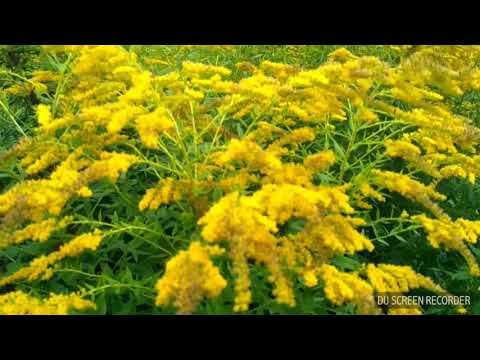

Watch this video on YouTube
Types and varieties of goldenrod with photos and names
Below, those types and varieties of goldenrod that are most popular with gardeners will be described in detail.
Goldenrod Shorti (Solidago shortii)
It is a perennial branched plant native to North America. The height of the bush is about 1.6 m, it is decorated with smooth oblong-lanceolate leaf plates serrated along the edge. The length of the panicle pyramidal inflorescences is about 0.45 m, they include baskets of a golden yellow hue. The most popular is such a variety of this species as Variegata: on the surface of green leaf plates there are stains and spots of yellow color.
Goldenrod rugosa (Solidago rugosa)
The homeland of this species is also North America. In nature, it prefers to grow in swamps, bogs, wet meadows and roadsides. In America, such a perennial plant is called the coarse-stemmed goldenrod. Its coarse brownish-red shoots are about 200 cm tall, smooth and straight. The bush also has a creeping rhizome. The shape of the leaf plates is oblong or oval, their width is about 20 mm, and their length is up to 90 mm, the edge is serrated. This species has no basal leaf plates. Unilateral brushes consist of small yellow baskets. And these brushes are part of the drooping panicle, the length of which is about 0.6 m.
Goldenrod daurian (Solidago dahurica = Solidago virgaurea var.dahurica)
This species is native to Siberia. It is a meter high bush with powerful simple shoots that branch only in the inflorescence. The upper part of the stems is covered with short hairs, while the lower part is naked. The stem leaf plates have short petioles, and the basal ones are long-petiolate. The shape of the serrated leaf plates along the edge can be lanceolate, oblong or ovoid, they sharpen to the apex. There are short hairs on the veins and edges of the plates. A simple racemose or narrow panicle inflorescence consists of a large number of small yellow baskets.
Canadian goldenrod (Solidago canadensis = Solidago canadensis var.canadensis)
This species is found naturally in North America. The height of the perennial plant is about 200 cm. The rich green leaf plates have an oblong-lanceolate shape. The length of the pyramidal panicle inflorescence is about 0.4 m, it consists of a large number of small baskets of golden yellow hue. This species has been cultivated since 1648. The ornamental variety - Patio is popular among gardeners: the height of the compact bush is about 0.6 m, it does not need a garter, it is decorated with golden baskets collected in bunches.
Common goldenrod (Solidago virgaurea)
In nature, this plant is found in Western Europe, Western Siberia, the Caucasus, the European part of Russia, and also in the western regions of Eastern Siberia. Simple straight or branched shoots reach 0.6–2 m in length. Alternate whole leaf plates have a lanceolate or linear-lanceolate shape. Complex inflorescences can be racemose, paniculate or spike-shaped, they include a large number of yellow baskets.
Goldenrod highest (Solidago altissima = Solidago canadensis var. Scabra)
Such a North American plant naturally prefers to grow on prairies, in wet meadows, in deserts, open forests and on roadside. In America, this species is called tall goldenrod. On the surface of straight shoots there is pubescence, their height is about 1.8 m. The surface of simple lanceolate leaf plates is streaked with parallel veins, the edge is jagged. The upper foliage is entire.One-sided brushes consist of lemon-yellow baskets. These brushes are collected in one-sided panicle inflorescences, the length of which is about 0.35 m. Such a plant is considered an excellent honey plant.
Goldenrod hybrid (Solidago x hybrida)
This species unites all hybrids created by breeders. For their removal, a species is used - Canadian goldenrod. Popular hybrids:
- Goldstral... A meter high bush is decorated with panicle inflorescences about 0.2 m long, which include golden yellow baskets.
- Kronenstahl... Plant height is about 1.3 m.The inflorescences consist of golden baskets, while their length is about 0.25 m.
- Spetgold... On a bush of a meter in height, inflorescences of a lemon-yellow hue grow, having a length of about 0.2 m.
- Frugold... Plant height up to 1.2 m, and the length of yellow inflorescences about 0.25 m.
- Schwefelgeiser... The plant is decorated with panicle yellowish inflorescences. The bush itself reaches a height of 1.4 m.
- Goldking... The bushes reach a height of about 1.5 m.The length of rich yellow panicles is up to 0.35 m.
Goldenrod properties: harm and benefit
The healing properties of goldenrod
The healing properties of goldenrod are used in both traditional and informal medicine. The composition of such a flower includes organic acids, coumarins, essential oil, phenol carboxylic acids and their derivatives, rutin and quercetin flavonoids, saponins, glycosides, alkaloids and terpenoids. Thanks to this composition, the plant has a powerful anti-inflammatory, analgesic, antioxidant, diuretic, antispasmodic and wound-healing effect.
In alternative medicine, this plant is used for improper exchange of uric acid in the body, scrofula, jaundice, cutaneous tuberculosis, indigestion and gallstone disease. It is also used in the treatment of stomatitis, bleeding gums, tonsillitis, gingivitis and to eliminate unpleasant odor from the oral cavity. This flower disinfects wounds and accelerates their healing, therefore it is used for edema, suppurating inflammation of the skin and fractures.
Funds made on the basis of goldenrod are used in the treatment of oxalate and urate stones, prostatitis, urethritis and even impotence. Gynecologists recommend taking them to women suffering from cystitis or candidiasis.
The rhizome of such a plant is also used as a healing raw material. It can help in the treatment of skin diseases and burns, as well as to eliminate the effects of stomach ulcers and hepatitis. It is also used to increase sexual activity, to treat urological diseases, to eliminate intoxication of the body caused by food poisoning. Goldenrod root also helps treat diarrhea in pets.
Goldenrod honey also has medicinal properties. It has an antimicrobial effect, it is used to increase the body's immune forces, and also to normalize metabolic processes. Compresses are made from such honey, which can help with skin inflammations, and they also eliminate swelling well. It also helps great during the treatment of sinusitis, tonsillitis and rhinitis, as well as meningitis.
In pharmacy kiosks, an extract of goldenrod from fresh inflorescences is sold; it is recommended to take it to normalize the work and restore the urinary system.
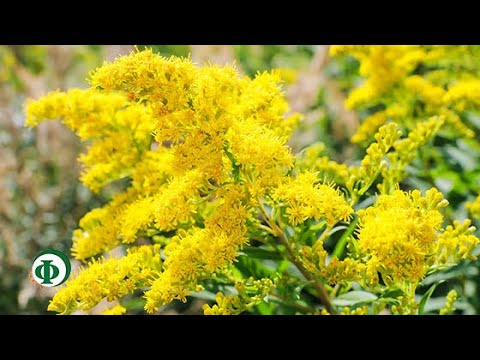

Watch this video on YouTube
Contraindications
The plant itself, as well as the products made on its basis, cannot be used during pregnancy and during breastfeeding, and it is also forbidden to use them for people suffering from glomerulonephritis. Such funds, as well as goldenrod honey, should be used very carefully by people who are allergic to ragweed and insulin dependent. It is also forbidden to use them at high pressure and during exacerbation of kidney disease.

